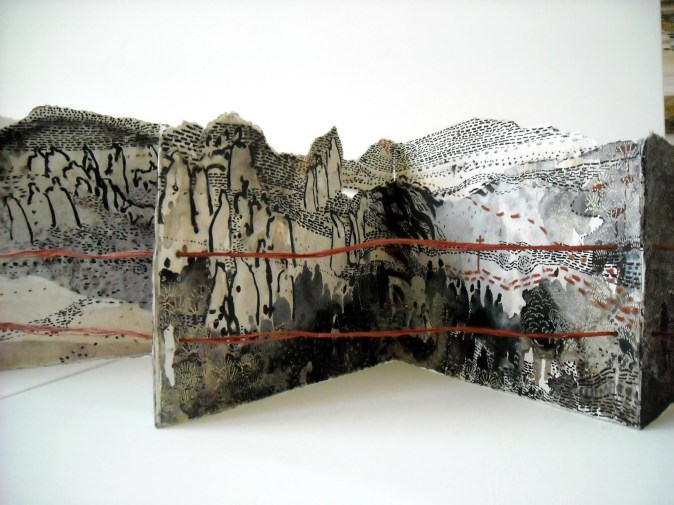Typeset Research Summary
Posted: May 16, 2012 Filed under: Typeset a Book Project Leave a commentAt the beginning of the project I wasn’t really sure what direction it was going to go in.
For this reason secondary research was a very helpful tool in directing the project, for instance, I could look at typesetting ideas, ways of presenting the story etc.
for instance, making the book become something else, as shown here (https://finalyearresearch.wordpress.com/2012/03/26/a-book-thats-not-a-book/) a reader’s digest cleverly takes form of a cake, another example had drawers and compartments (https://finalyearresearch.wordpress.com/2012/03/26/a-book-with-drawers/) and sculpture ideas – cutting out, revealing etc (https://finalyearresearch.wordpress.com/2012/03/26/more-book-ideas/)
Having no luck research ‘typeset books’ I decided to explore artist’s books which at times take of imaginative designs and layouts, making use of materials and techniques. For instance (https://finalyearresearch.wordpress.com/2012/03/26/artists-books/) the use of string connecting pages in one example helped me to consider how this could be applied to my design and represent the route taken or distance traveled by Phileas Fogg around the world.
I also considered other formats other than books – ‘breaking the boundaries’ so to speak – looking at more 3D and larger format ideas, including origami (https://finalyearresearch.wordpress.com/2012/03/26/origami-book-maybe/), and posters (https://finalyearresearch.wordpress.com/2012/03/02/harry-potter-posters/)
I also researched existing covers to see if this could spark any ideas, as shown by this example (https://finalyearresearch.wordpress.com/2012/03/01/covers/) which features some simple yet effective designs, including a special edition penguin book, which showed the route and countries visited and wrapped around the book.
After some primary research, I decided to develop the project and create a volvelle – a spinning chart that reveals information through a window when turned. I felt it would be useful to get ideas of how they work/ look etc, and both looked at simple designs for wedding invites to very complex old fashioned versions.
(https://finalyearresearch.wordpress.com/2012/05/16/volvelle/)
I then began to look at imagery to shape the way the design would look – I wanted an ‘old-fashioned’ feel and looked at vintage maps and stamps, for example, for inspiration, get idea of colour and shape etc –
(https://finalyearresearch.wordpress.com/2012/03/26/maps-from-the-1870s/)
(https://finalyearresearch.wordpress.com/2012/05/16/stamps/)
a book…that’s not a book
Posted: March 26, 2012 Filed under: Typeset a Book Project Leave a commentCAKE!

The Reader’s Digest (Cake Book) (from the Walker Art Center website): “…at first glance looks like a generous slice of layer cake resting on a robin’s-egg blue plate. On closer examination, we notice that artist Robert The created the piece from a two-volume bound set of Reader’s Digest magazines, jigsawed into a wedge and delicately frosted with wax. It’s not just a clever take on the adage about “having one’s cake,” but also on the “ingestion”—and perhaps more important, digestion—of knowledge.”
wowza
Posted: March 26, 2012 Filed under: Typeset a Book Project Leave a comment
Rob Matthew’s 5000-page fully printed physical Wikipedia book.
Artists books
Posted: March 26, 2012 Filed under: Typeset a Book Project Leave a commentTo get ideas for layouts/formats











Fiona Banner
Posted: March 26, 2012 Filed under: Typeset a Book Project Leave a commentHere the artist, who works with type alot in her work, overlays every page of the dictionary onto one page – its manic!
Maybe I could try this, perhaps in 80 layers??

If the text were to go in a map….
Posted: March 26, 2012 Filed under: Typeset a Book Project Leave a comment…how might it fit – I’m thinking squares?




















